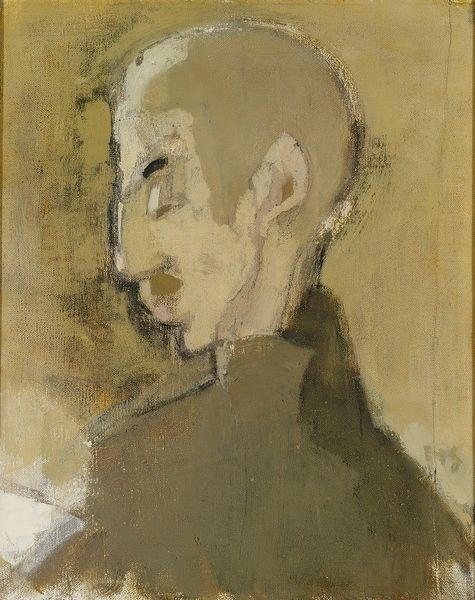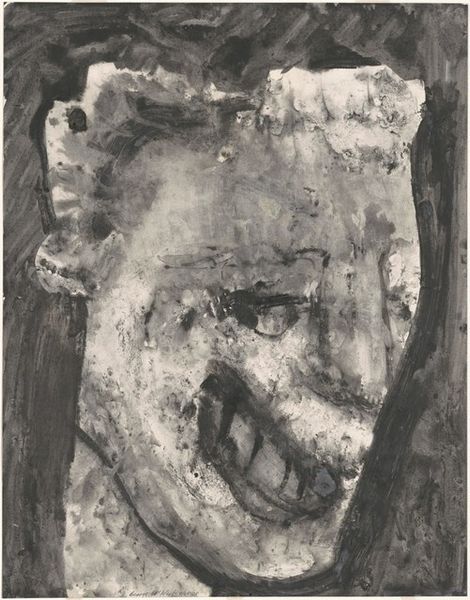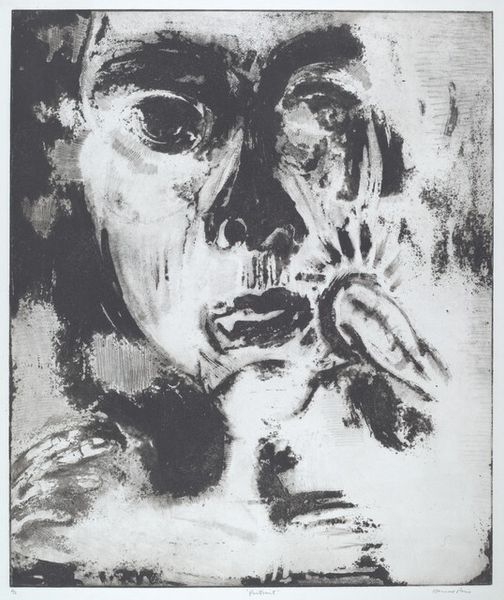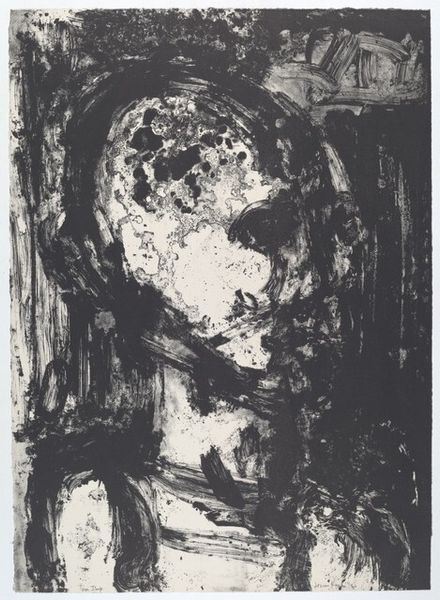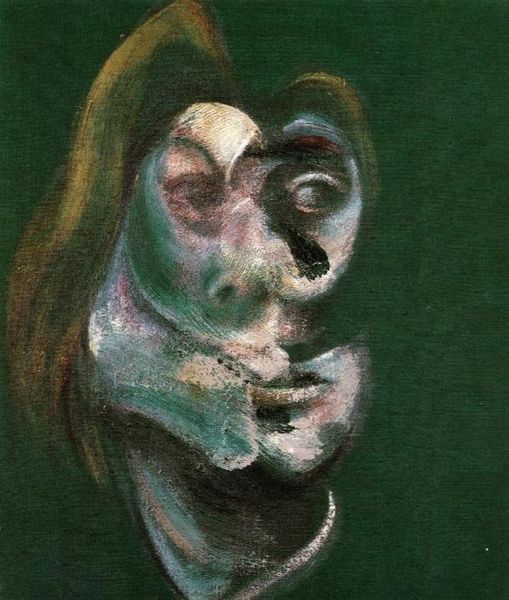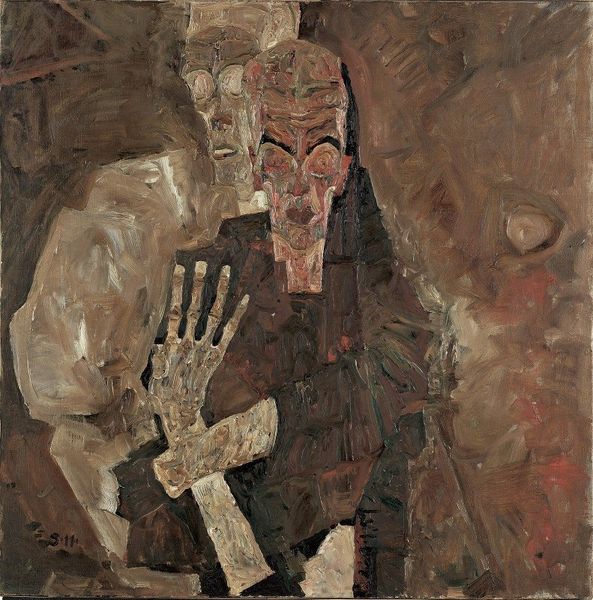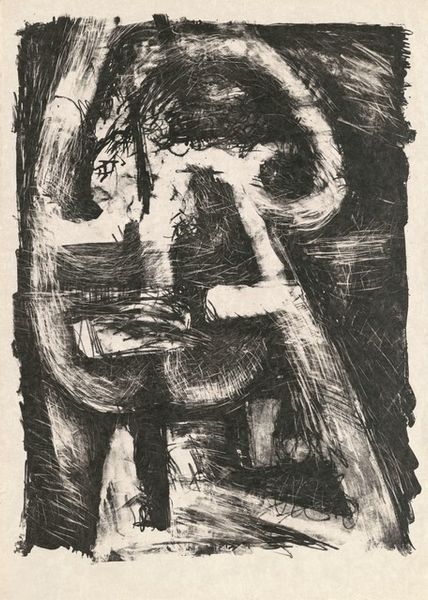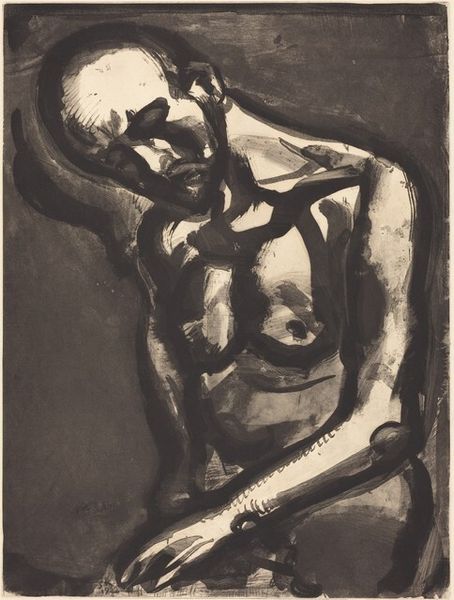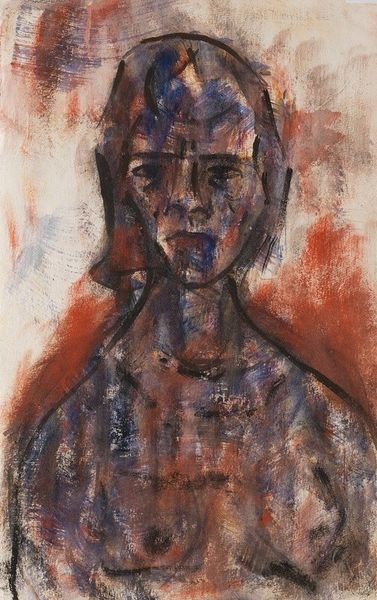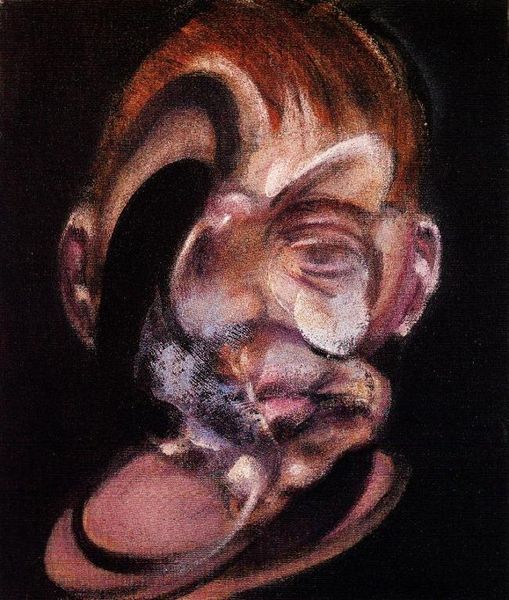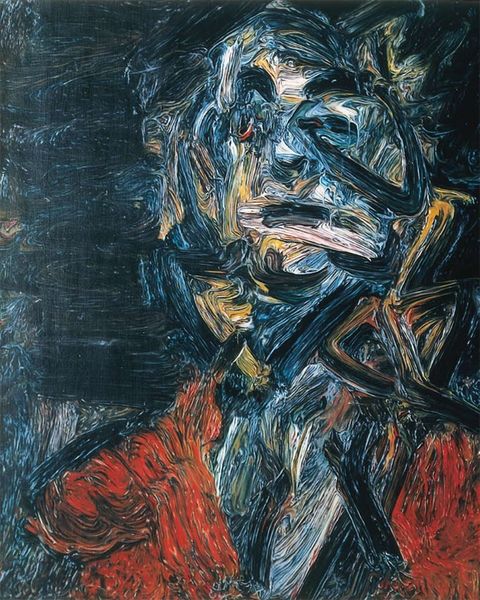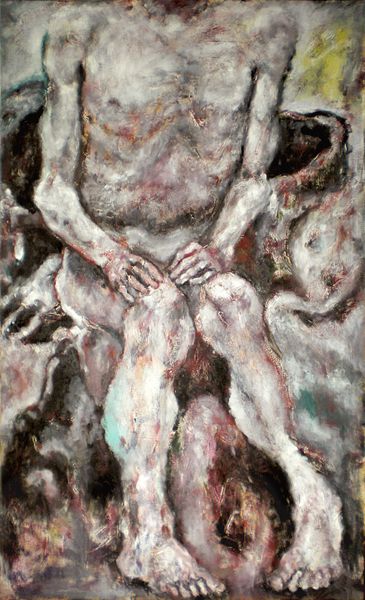
#
abstract expressionism
#
abstract painting
#
possibly oil pastel
#
oil painting
#
fluid art
#
acrylic on canvas
#
underpainting
#
painting painterly
#
animal drawing portrait
#
portrait art
Copyright: Istvan Ilosvai Varga,Fair Use
Editor: Here we have Istvan Ilosvai Varga's "Self-portrait against a Red Background," created in 1938. It looks like oil on canvas, and it's quite striking, almost unsettling. What stands out to you? Curator: What interests me is how the materiality and the process challenge traditional portraiture. We see a departure from meticulous representation. The brushstrokes are visible; the texture is palpable. It’s not just *who* is being represented, but *how* the act of representation is undertaken. Considering the time, what kind of socio-economic forces could influence Varga's process of art creation? Editor: That’s a great point. The rawness feels very intentional, almost a rejection of academic polish. Do you think the limited palette of red and black has a specific significance in relation to the artist's experience and the world events that were happening at that moment? Curator: Precisely. The restrained color palette may point to constraints or limited resources. Also, the act of applying dark pigment over red hints at suppression or conflict. Were there political pressures that may have caused him to censor his self-expression through a sort of masking of color? The "how" informs the "why." Editor: That's insightful. I hadn’t considered the practical and social conditions so explicitly. This shifts my perception from viewing it solely as a personal expression to a reflection of larger historical forces. Curator: It's about understanding art not just as image-making but as object-making embedded in socio-political systems and histories of labor. Editor: It provides so much more to explore and analyze. Thanks for sharing this interpretation!
Comments
No comments
Be the first to comment and join the conversation on the ultimate creative platform.
